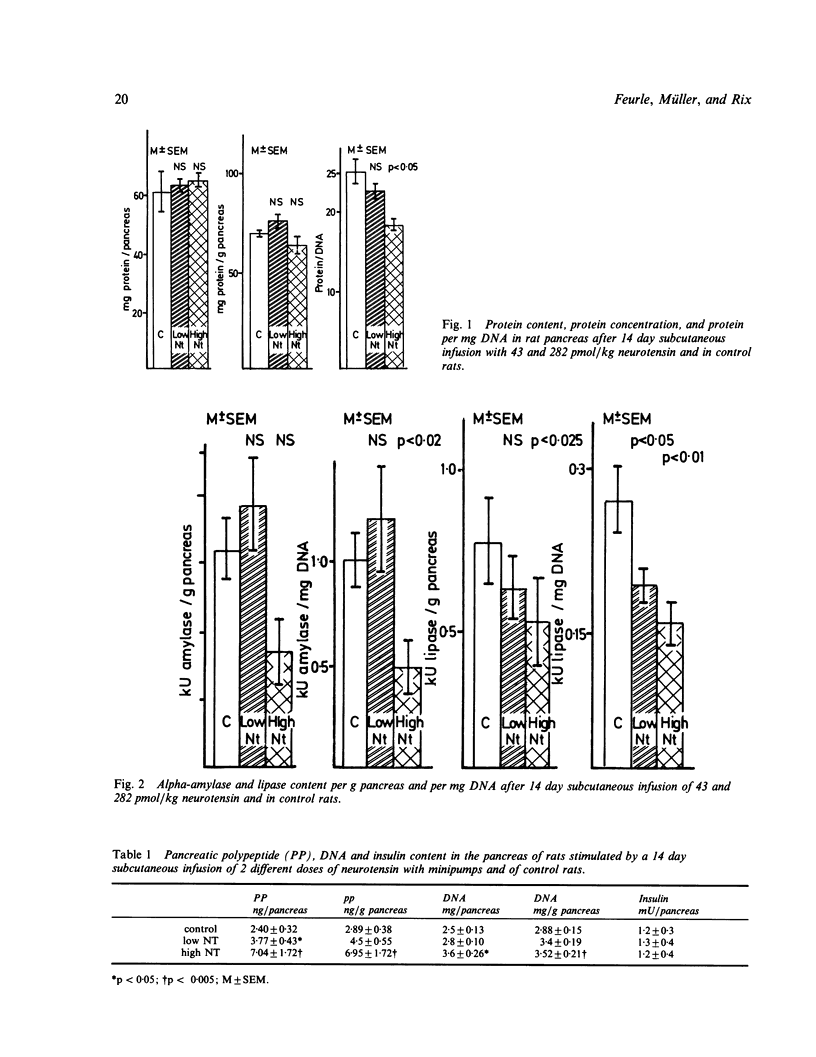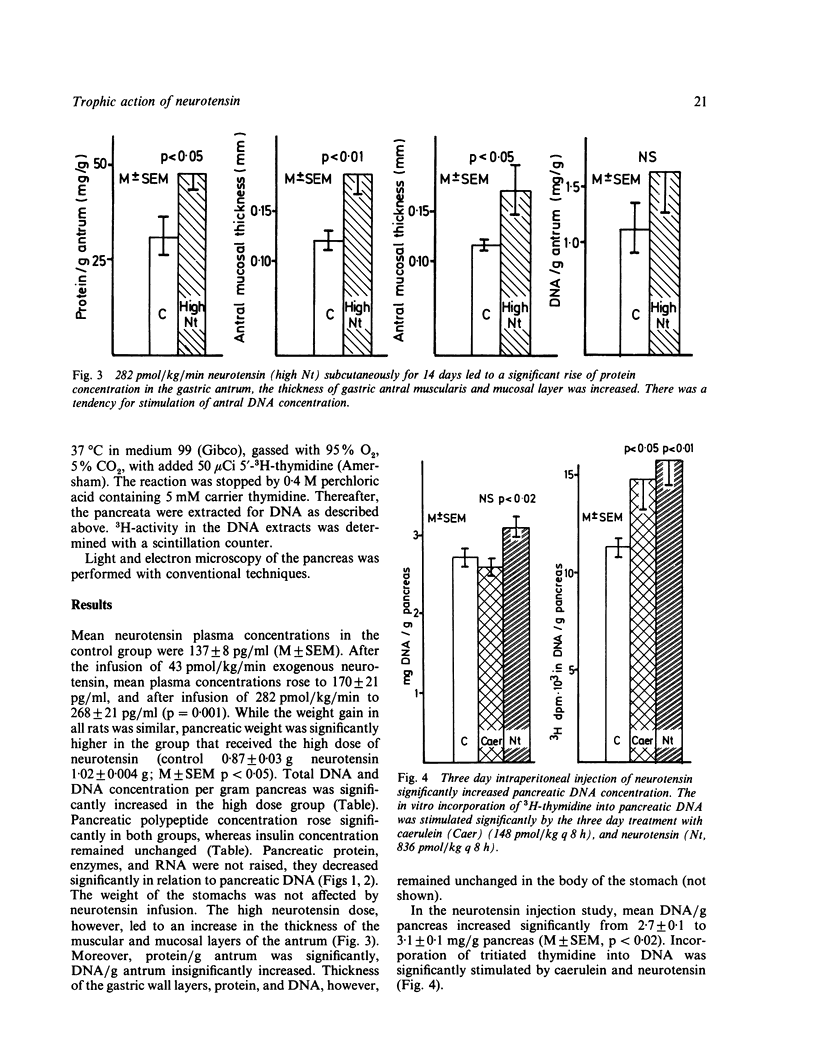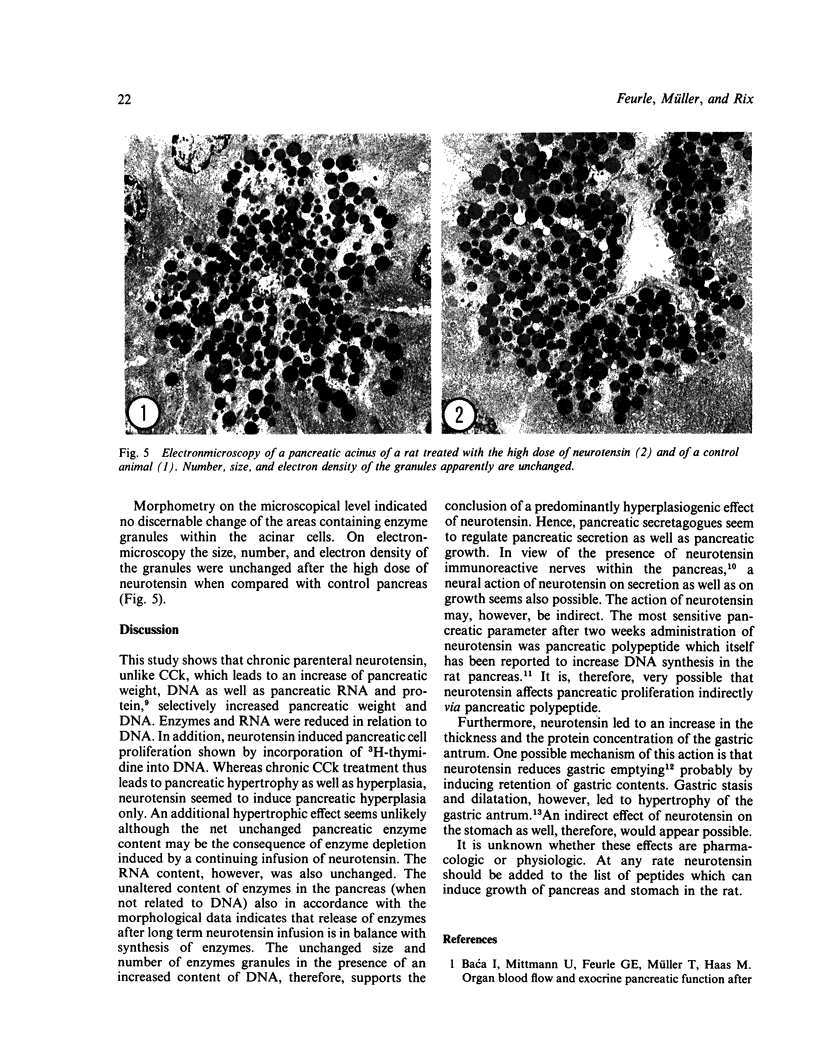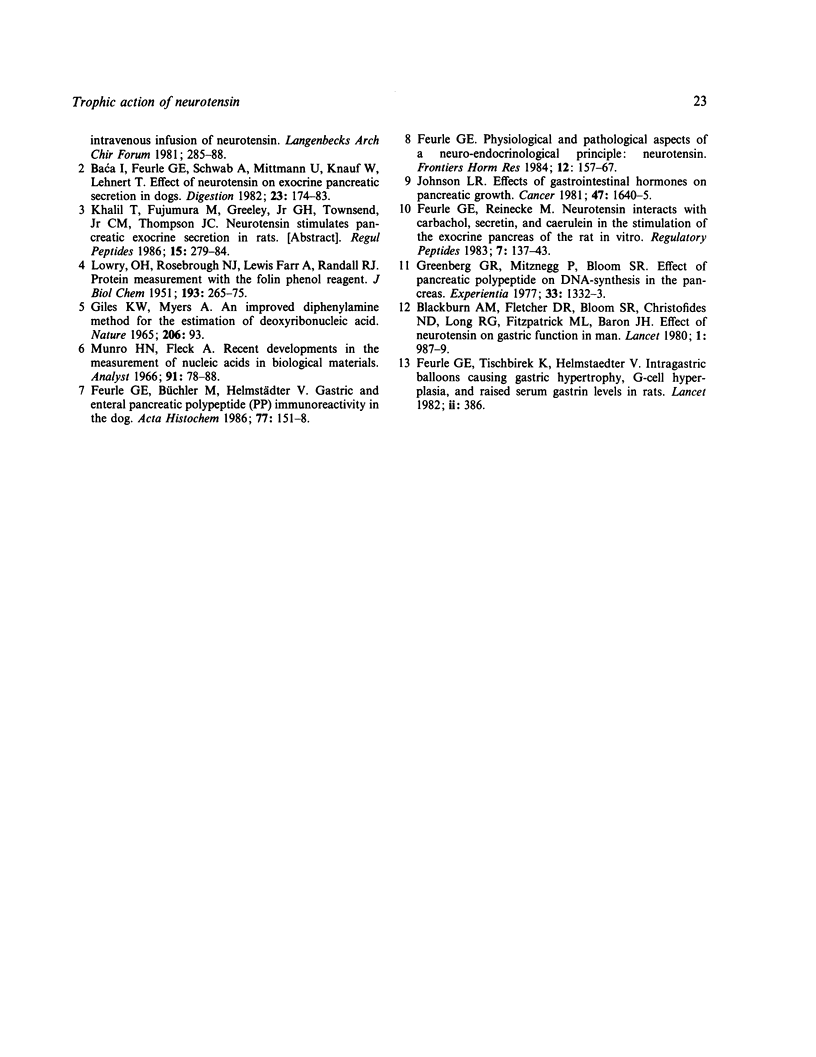Abstract
We investigated whether chronic subcutaneous infusion of neurotensin during 14 days would affect pancreatic and gastric growth of rats. In another experiment, neurotensin (836 pmol/kg) was injected intraperitoneally three times a day for three days in 12 rats. Thereafter, pancreatic DNA and in vitro incorporation of 3H-thymidine into pancreatic DNA was determined. Long term infusion of 282 pmol/kg neurotensin induced an increase of pancreatic weight, DNA, and pancreatic polypeptide, whereas pancreatic protein, RNA, amylase and lipase contents were not increased. In relation to DNA, even these parameters were significantly depressed. Insulin remained unchanged. Neurotensin, therefore, caused hyperplasia of the pancreas. Intraperitoneal injection of neurotensin induced an increase of pancreatic DNA content and stimulated 3H-thymidine incorporation into DNA, whereas caerulein only augmented 3H-thymidine incorporation. Moreover, long term neurotensin infusion led to a rise in protein concentration and an increase in the thickness of the gastric antrum; antral DNA concentration was insignificantly stimulated. Neurotensin, therefore, can act as a trophic factor on pancreas and gastric antrum of the rat.
Full text
PDF




Images in this article
Selected References
These references are in PubMed. This may not be the complete list of references from this article.
- Baca I., Feurle G. E., Schwab A., Mittmann U., Knauf W., Lehnert T. Effect of neurotensin on exocrine pancreatic secretion in dogs. Digestion. 1982;23(3):174–183. doi: 10.1159/000198725. [DOI] [PubMed] [Google Scholar]
- Blackburn A. M., Fletcher D. R., Bloom S. R., Christofides N. D., Long R. G., Fitzpatrick M. L., Baron J. H. Effect of neurotensin on gastric function in man. Lancet. 1980 May 10;1(8176):987–989. doi: 10.1016/s0140-6736(80)91434-8. [DOI] [PubMed] [Google Scholar]
- Feurle G. E., Büchler M., Helmstädter V. Gastric and enteral pancreatic polypeptide (PP) immunoreactivity in the dog. Acta Histochem. 1985;77(2):151–158. doi: 10.1016/S0065-1281(85)80076-3. [DOI] [PubMed] [Google Scholar]
- Feurle G. E., Reinecke M. Neurotensin interacts with carbachol, secretin, and caerulein in the stimulation of the exocrine pancreas of the rat in vitro. Regul Pept. 1983 Oct;7(2):137–143. doi: 10.1016/0167-0115(83)90305-1. [DOI] [PubMed] [Google Scholar]
- Feurle G. E., Tischbirek K., Helmstaedter V. Intragastric balloons causing gastric hypertrophy, G-cell hyperplasia, and raised serum gastrin levels in rats. Lancet. 1982 Aug 14;2(8294):386–386. doi: 10.1016/s0140-6736(82)90576-1. [DOI] [PubMed] [Google Scholar]
- Greenberg G. R., Mitznegg P., Bloom S. R. Effect of pancreatic polypeptide on DNA-synthesis in the pancreas. Experientia. 1977 Oct 15;33(10):1332–1333. doi: 10.1007/BF01920164. [DOI] [PubMed] [Google Scholar]
- Johnson L. R. Effects of gastrointestinal hormones on pancreatic growth. Cancer. 1981 Mar 15;47(6 Suppl):1640–1645. doi: 10.1002/1097-0142(19810315)47:6+<1640::aid-cncr2820471430>3.0.co;2-s. [DOI] [PubMed] [Google Scholar]
- Khalil T., Fujimura M., Greeley G. H., Jr, Townsend C. M., Jr, Thompson J. C. Neurotensin stimulates pancreatic exocrine secretion in rats. Regul Pept. 1986 Oct;15(3):279–284. doi: 10.1016/0167-0115(86)90069-8. [DOI] [PubMed] [Google Scholar]
- LOWRY O. H., ROSEBROUGH N. J., FARR A. L., RANDALL R. J. Protein measurement with the Folin phenol reagent. J Biol Chem. 1951 Nov;193(1):265–275. [PubMed] [Google Scholar]
- MASTER R. W. POSSIBLE SYNTHESIS OF POLYRIBONUCLEOTIDES OF KNOWN BASE-TRIPLET SEQUENCES. Nature. 1965 Apr 3;206:93–93. doi: 10.1038/206093b0. [DOI] [PubMed] [Google Scholar]
- Munro H. N., Fleck A. Recent developments in the measurement of nucleic acids in biological materials. A supplementary review. Analyst. 1966 Feb;91(79):78–88. doi: 10.1039/an9669100078. [DOI] [PubMed] [Google Scholar]



